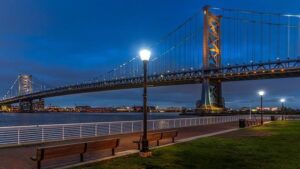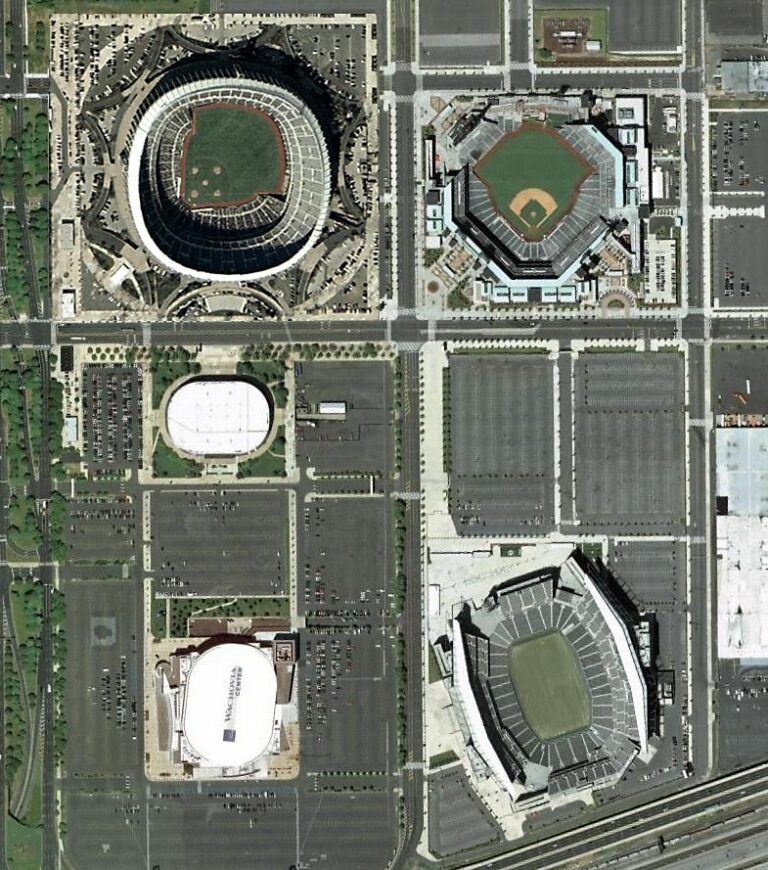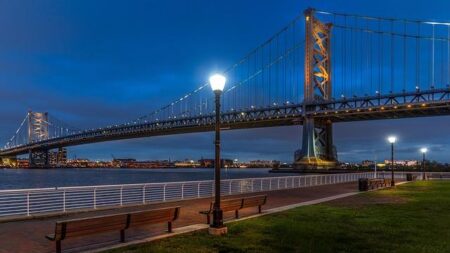PhiladelphiaŌĆÖs Upcoming Dual-Sport Arena: A New Era for the 76ers and Flyers
Transforming South Philadelphia with a Cutting-Edge Shared Venue
Philadelphia is on the brink of a major transformation in its sports scene with the announcement of a new, innovative arena designed to host both the NBAŌĆÖs Philadelphia 76ers and the NHLŌĆÖs Philadelphia Flyers. Situated within the South Philadelphia Sports Complex, this modern facility is set to replace the iconic Wells Fargo Center, delivering a next-generation experience for athletes and fans alike. The project underscores PhiladelphiaŌĆÖs dedication to remaining a top-tier hub for professional sports and entertainment, while integrating the latest advancements in venue technology and sustainability.
This arena will pioneer a seamless multi-sport environment, featuring:
- Dynamic seating arrangements that swiftly adapt to basketball and hockey configurations.
- State-of-the-art audiovisual systems that amplify the excitement with crystal-clear visuals and immersive sound.
- Smart digital platforms enabling personalized fan interactions through mobile apps and interactive kiosks.
- Eco-conscious construction incorporating solar energy and water-saving technologies.
| Specification | Details |
|---|---|
| Maximum Capacity | Approximately 20,500 spectators |
| Technology Features | Ultra HD 4K video boards and Wi-Fi 6 connectivity |
| Accessibility | Comprehensive ADA compliance |
| Transportation Access | Upgraded public transit links and expanded stops |
Boosting PhiladelphiaŌĆÖs Economy: Job Creation and Local Business Growth
The construction and operation of this shared arena are projected to be a powerful economic engine for South Philadelphia. During the building phase, the project is expected to generate over 5,000 jobs, spanning skilled labor, project oversight, and support services. Once operational, the arena will sustain more than 2,500 permanent positions, including roles in event coordination, security, concessions, and facility upkeep.
Beyond employment, the arena is anticipated to invigorate the local economy by:
- Attracting tourists for a variety of events, from sports to concerts.
- Stimulating growth for nearby restaurants, hotels, and retail outlets.
- Driving neighborhood revitalization through infrastructure improvements and enhanced public spaces.
| Economic Factor | Projected Impact |
|---|---|
| Construction-Related Jobs | 5,000+ |
| Long-Term Employment | 2,500+ |
| Annual Economic Contribution | Over $350 million |
| Increase in Local Business Revenue | Estimated 15% growth |
Innovative Design Prioritizing Fan Interaction and Environmental Stewardship
The arenaŌĆÖs design focuses heavily on enhancing fan engagement through immersive technology and comfort. Spectators will enjoy interactive digital displays offering live statistics, instant replays, and social media integration. Flexible seating ensures optimal views for every event, while upgraded sound systems and robust connectivity keep fans connected and entertained throughout their visit. Communal areas will encourage socializing, making the venue a vibrant gathering place beyond game time.
Environmental sustainability is a core principle of the project, with the arena targeting LEED Platinum certification. Key green initiatives include:
- Utilization of recycled steel and timber sourced from local suppliers.
- Installation of green roofs to mitigate urban heat effects.
- Energy-efficient LED lighting controlled by smart systems.
- Electric vehicle charging stations integrated into parking facilities.
| Feature | Advantage | Environmental Impact |
|---|---|---|
| Sustainable Building Materials | Reduced carbon emissions | Lower ecological footprint |
| Smart Energy Management | Efficient resource use | Cost savings and sustainability |
| Enhanced Fan Technology | Engaging and interactive experience | Higher fan satisfaction and retention |
Addressing Community Concerns: Ensuring Local Voices Shape the ArenaŌĆÖs Future
While many residents near the South Philadelphia Sports Complex welcome the new arena, some express apprehension about potential challenges such as increased traffic, noise levels, and effects on small businesses. Community members emphasize the need for improved public transit options and sound mitigation strategies to minimize disruptions. They also call for transparent communication and ongoing collaboration between developers, city officials, and local stakeholders.
Community-driven recommendations include:
- Establishing a community advisory board to monitor project progress.
- Hosting regular public meetings to provide updates and gather feedback.
- Investing in green spaces and pedestrian-friendly pathways around the arena.
- Creating partnerships with local vendors to support economic inclusion.
| Issue | Proposed Solution | Priority Level |
|---|---|---|
| Traffic Congestion | Extend and enhance public transit service hours | High |
| Noise Pollution | Implement sound barriers and enforce event curfews | Medium |
| Impact on Local Businesses | Offer vendor spaces within the arena | High |
| Community Engagement | Organize monthly town hall forums | High |
Conclusion: PhiladelphiaŌĆÖs Sports Future Shaped by Innovation and Community
As Philadelphia advances plans for this innovative shared arena, the city is poised to enhance its sports infrastructure significantly, providing a premier venue for the 76ers and Flyers. This development promises to invigorate the local economy, elevate fan experiences, and set new standards for sustainable, multi-purpose sports facilities. Further updates on construction milestones and design specifics will be shared in the coming months, marking an exciting new chapter in PhiladelphiaŌĆÖs rich sports heritage. Stay connected with CBS News for the latest coverage on this landmark project.








